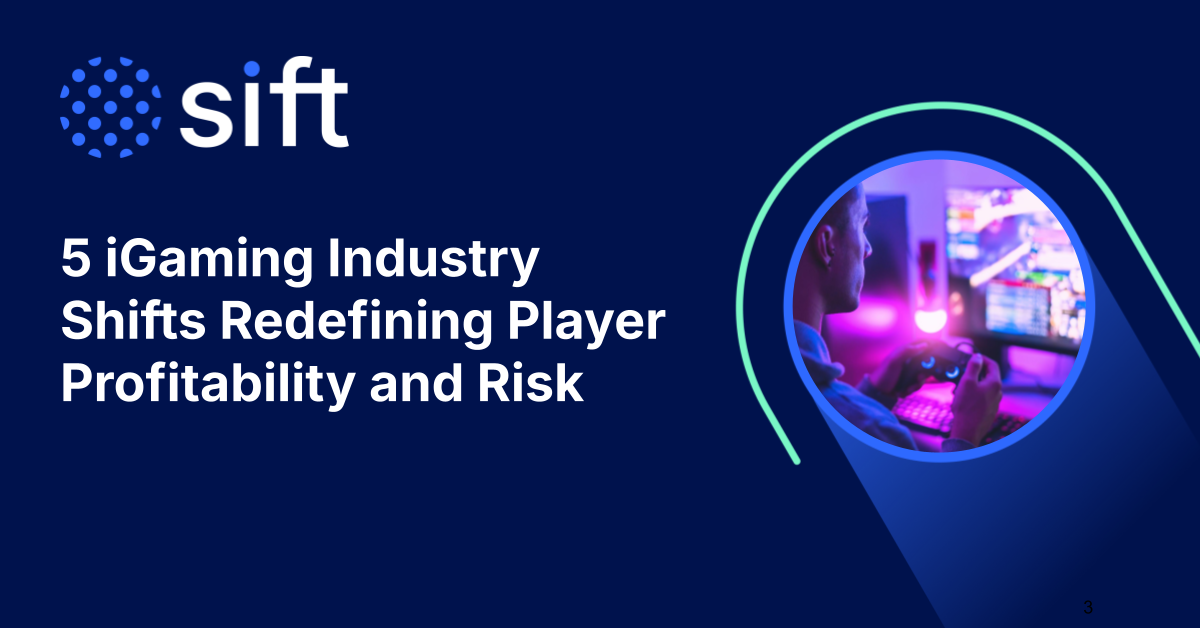The digital payments space is constantly evolving, with new regulations shaping how businesses operate and protect their customers. PSD3 (Payment Services Directive 3) and PSR (Payment Services Regulation) are the latest regulatory advancements aimed at enhancing security, reducing fraud, and improving customer experiences in the European Economic Area (EEA). Building on the foundations of PSD2, these new directives bring forward more stringent requirements and opportunities for businesses to innovate and secure their transactions. In this blog, we’ll explore the key aspects of PSD3 and PSR, their implications, and how Sift supports compliance in these areas.
Understanding PSD3 and PSR
The third Payment Services Directive (PSD3) and the Payment Services Regulation (PSR) are new legislative proposals from the European Commission aimed at updating the framework of the European payments market. Building on the foundation of PSD2, PSD3 focuses on payments, data, and security, further strengthening the market and reducing national variations. Implemented across Denmark, Finland, and Sweden in 2018, and Norway in 2019, PSD2 itself was an evolution of the original PSD from 2007. PSR, introduced alongside PSD3, includes articles from PSD2 with additional clarifications and new regulations, impacting banks, fintechs, payment service providers, and customers both legally and operationally.
Key Objectives of PSD3 and PSR
- Enhanced Security Measures: Building on the Strong Customer Authentication (SCA) requirements of PSD2, PSD3 introduces additional layers of security to protect consumers and businesses from evolving fraud tactics.
- Increased Transparency: Greater transparency in payment processes, including clearer communication of fees and terms to consumers, fostering trust and informed decision-making.
- Innovation and Competition: Encouraging innovation by supporting the development of new payment services and promoting competition among PSPs.
- Consumer Protection: Strengthening consumer rights and ensuring that PSPs handle complaints and disputes more effectively.
The Evolution from PSD2 to PSD3
While PSD2 laid the groundwork for stronger security through SCA and reduced fraud in electronic payments, it also highlighted areas that needed further improvement. PSD3 addresses these gaps with a more comprehensive approach to fraud prevention and customer protection.
Key Differences Between PSD2 and PSD3
- Extended Scope: PSD3 expands the scope of SCA to cover a broader range of transactions, including more stringent requirements for authentication.
- Technology Neutrality: PSD3 emphasizes technology neutrality, allowing for innovative authentication methods to be used, provided they meet the regulatory standards.
- Operational Resilience: PSD3 introduces measures to enhance the operational resilience of PSPs, ensuring that they can withstand and recover from disruptions effectively.
How Sift Supports PSD3 and PSR Compliance
Sift offers advanced fraud prevention solutions that align seamlessly with the requirements of PSD3 and PSR. By leveraging machine learning and real-time data analysis, Sift helps businesses stay compliant while providing exceptional customer experiences. See below for how our features help support various aspects of regulatory compliance.
Key Features of Sift’s Fraud Prevention Solution
- Real-time Fraud Detection: Sift’s machine learning models analyze vast amounts of data in real time, identifying and preventing fraudulent activities before they impact the business. This proactive approach is crucial in meeting the enhanced security standards of PSD3.
- Comprehensive Risk Assessment: Sift provides a detailed risk assessment of each transaction, helping businesses apply the appropriate level of authentication and reduce unnecessary friction for legitimate customers.
- Seamless Integration: Sift integrates easily with existing payment systems, ensuring a smooth transition to the new regulatory requirements without disrupting business operations.
- Adaptive Authentication: With PSD3’s emphasis on technology neutrality, Sift supports various authentication methods, allowing businesses to choose the most suitable options for their customers while staying compliant.
- Continuous Monitoring and Adaptation: Fraudsters constantly evolve their tactics, and so does Sift. The Sift Platform continuously updates its models and strategies to stay ahead of emerging threats, ensuring ongoing compliance and security.
Navigating the Compliance Landscape
As businesses prepare for the implementation of PSD3 and PSR, understanding the regulatory landscape and taking proactive measures is essential. Here are some practical steps to ensure compliance and protect your business:
- Assess Your Current Systems: Evaluate your existing payment systems and identify areas that need to be updated to meet the new requirements of PSD3 and PSR.
- Implement Strong Customer Authentication: Ensure that your authentication processes meet the enhanced standards of PSD3, incorporating multiple verification factors to secure transactions.
- Leverage Advanced Fraud Prevention Tools: Utilize solutions like Sift to detect and prevent fraud in real time, reducing the risk of chargebacks and financial losses.
- Educate Your Team: Train your staff on the new regulations and the importance of compliance, ensuring that everyone is aware of their role in maintaining security and protecting customers.
- Stay Informed: Keep up with regulatory updates and industry trends to ensure that your business remains compliant and can adapt to new requirements as they arise.
The Role of Exemptions in Reducing Friction
One of the key strategies for balancing security and customer experience under PSD3 is the effective use of exemptions. Transactions that fall under specific categories, such as low-value payments or recurring charges, may be exempt from the stringent SCA requirements, reducing friction for customers. However, it’s crucial to apply these exemptions judiciously to avoid creating vulnerabilities that fraudsters can exploit.
Strategies for Managing Exemptions
- Work with Your PSP: Collaborate closely with your payment service provider to develop a strategy for maximizing exemptions while maintaining security.
- Monitor Exempt Transactions: Keep a close eye on transactions that fall under exemptions, using advanced fraud detection tools to identify any suspicious activity.
- Educate Your Customers: Inform your customers about the security measures in place and how exemptions work, fostering trust and reducing concerns about authentication processes.
Implementing Digital Risk Management
Digital trust and risk management are at the core of a successful compliance strategy. By adopting a holistic approach to fraud prevention and customer protection, businesses can create a secure and seamless experience for their customers, fostering loyalty and long-term growth.
Benefits of digital risk management:
- Improved Customer Experience: By accurately identifying and preventing fraud, businesses can provide a smoother and more secure experience for legitimate customers.
- Expanded Growth Opportunities: Strong security measures and compliance with regulatory standards open up opportunities to expand into new markets and attract more customers.
- Reduced Risk: Effective digital risk management reduces the risk of financial losses, chargebacks, and reputational damage, ensuring business continuity and growth.
Conclusion
PSD3 and PSR represent the next step in the evolution of payment regulations, aiming to create a more secure and transparent digital payments ecosystem. By understanding the new requirements and leveraging digital risk management solutions like Sift, businesses can not only ensure compliance but also enhance customer trust and loyalty. As the regulatory landscape continues to evolve, staying informed and proactive is key to navigating these changes successfully and building a secure future for digital payments.







